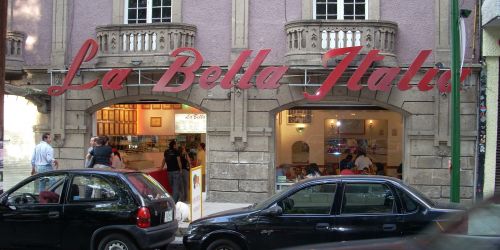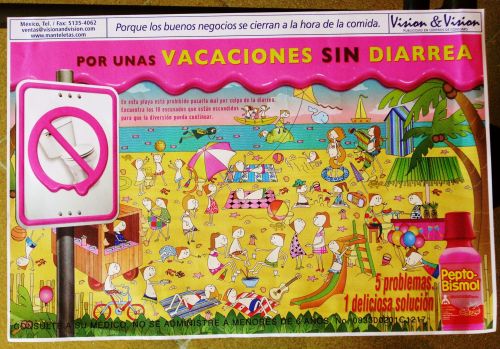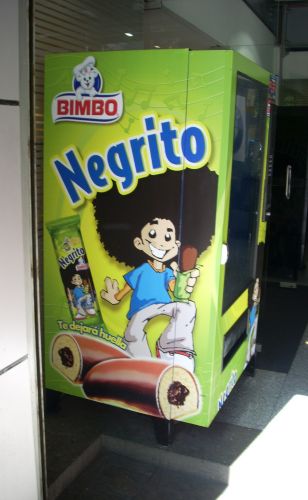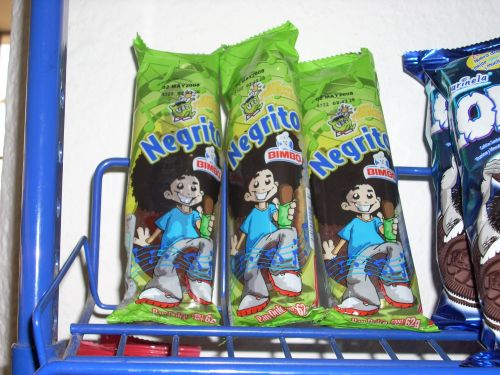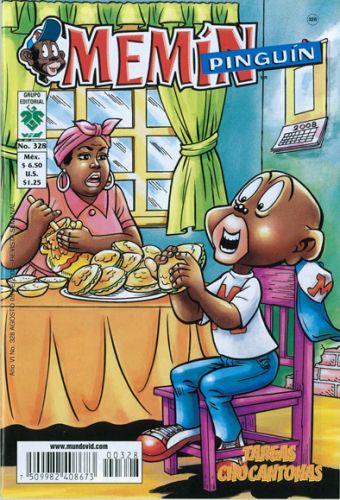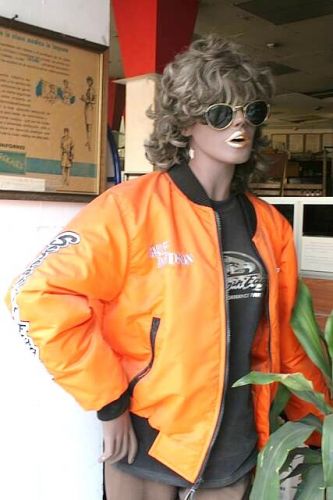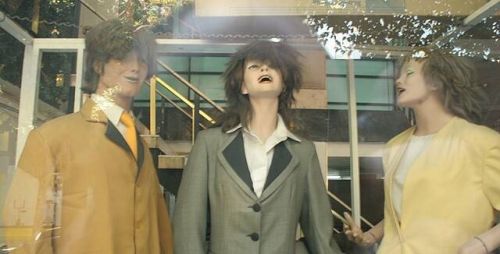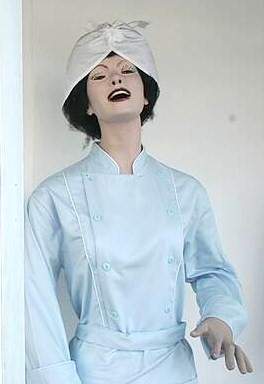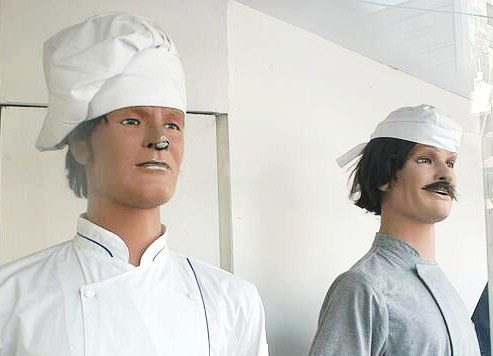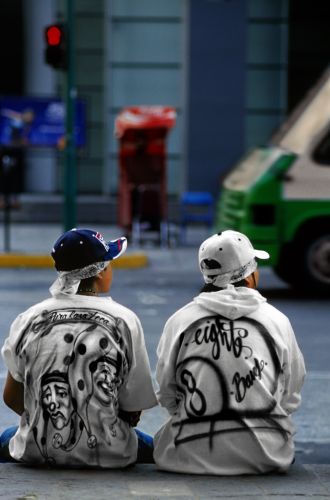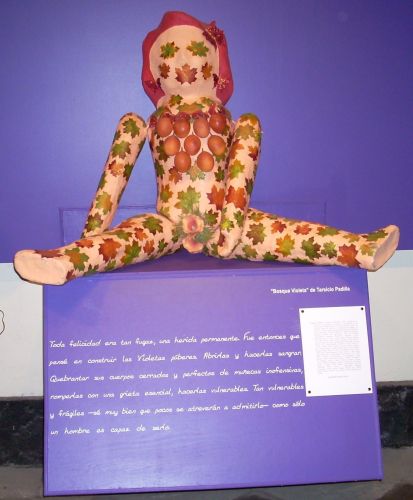In Mexico City, it rains in the summer. Once in a while the rain lasts all day and it gets rather cold (at least by the standards of the temperate climate here). But usually it only rains for an hour or so in the afternoon (some days it doesn’t rain at all) and the weather is marvelous. Here are some signs that summer is here.
La Bella Italia, which serves the best ice cream in the city, is packed. It’s on Calle Orizaba, just south of Álvaro Obregón, in the Colonia Roma.
Here’s a kid on his summer job, directing traffic around a construction site. How old do you think he is?
This is a paper placemat used in cantinas and cafeterias at lunch hour. Usually, these placemats sport five or six small advertisements for local businesses. This one is obviously a full-page ad for Pepto Bismol. For those of you who don’t read Spanish, across the top of the sheet is the legend, “For vacations without diarrhea.” The fine print above the drawing says, “It’s prohibited to have a bad time at this beach due to diarrhea.” Perhaps appealing to the kiddies, or to those who are young at heart, within the sketch are ten hidden toilets you’re supposed to find (while waiting for your meal). Welcome to Mexico.
